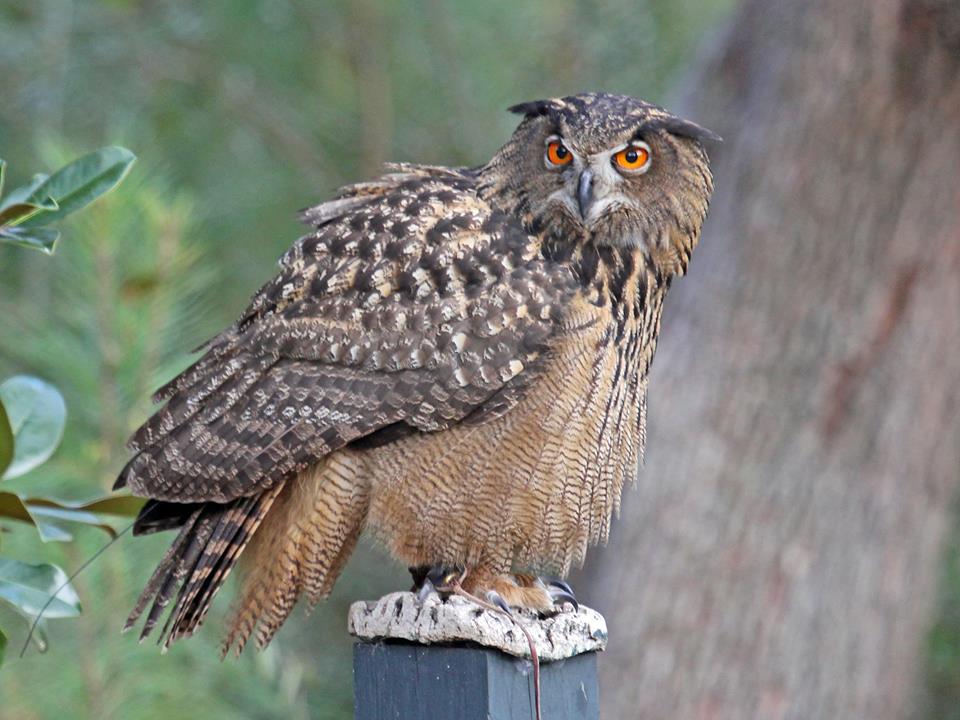Eurasian eagle–owl: Red Data Book of Armenia

True owls - Strigidae
Status. A rare and vulnerable species. Listed in the Red Data Book of Russia. Listed in the IUCN Red List of Threatened Species (ver. 3.1) as Least Concern. According to IUCN criteria categorized as Vulnerable VU B1a; C2a(i); D1.
Distribution. The key range of this subspecies is located to the south of the nominal subspecies’ distribution area – in Bessarabia, Crimea, Caucasus, Asia Minor, Syria.
Distribution in Armenia. Occurs almost everywhere.
Habitats. A widespread species nestling in different landscapes from lowland semi–deserts to mountain grasslands at 2700 m above sea level. In mountains undertakes altitudinal migrations and in winter moves downwards to foothills.
Biological traits. Nestles in caves. Preys predominantly on rodents and birds. Non–migratory. Lays 2–4 eggs once a year. In 2007, 13 pairs bred at the EARAZA zoos have produced 6 offspring.
Population size and its trends. Available information is insufficient to judge about the population size. In 2008, 9 individuals were kept at the Yerevan Zoo and 154 owls at the EARAZA zoos.
Major threats. Human persecution is possibly among the principal threats. The cases of capturing eagle–owls for home rearing or stuffing are numerous. Insufficient state control over the use of toxic chemicals in agriculture and encroachment of hunting grounds for agricultural purposes.
Conservation measures. Listed in Appendix II of the CITES and in Appendix II of the Berne Convention. Protected in a number of reserves and sanctuaries. In light of insufficient information on eagle–owl population size, it is essential to include this bird to the plan of biodiversity monitoring and to implement its annual census. Numerous threats dictate for development of measures to protect the species habitats and to raise local awareness. It is important to reconsider the practices of land use and application of toxic chemicals within the eagle–owl habitats and to transform them into more environmentall friendly alternative approaches. The rates of fines for poaching should be increased.
Suggestions
 The Ministry of Environment sent a letter international partners to draw their attention to the real danger of environmental disasters as a result of Azerbaijan's large-scale aggression towards the territory of Armenia
The Ministry of Environment sent a letter international partners to draw their attention to the real danger of environmental disasters as a result of Azerbaijan's large-scale aggression towards the territory of Armenia
 Vicia pisiformis: Red Data Book of Armenia
Vicia pisiformis: Red Data Book of Armenia
 Vavilovia formosa: Red Data Book of Armenia
Vavilovia formosa: Red Data Book of Armenia
 Trigonella capitata: Red Data Book of Armenia
Trigonella capitata: Red Data Book of Armenia
 Trigonella astroides: Red Data Book of Armenia
Trigonella astroides: Red Data Book of Armenia












